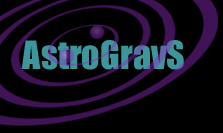
News /
Reports
Images & Movies
Links
Joint NSF/NASA Task Force
-
NSF/NASA Report available
(PDF:
Need Acrobat Reader?)
Beverly Berger (bberger_at_nsf.gov), Program Director, NSF , and Michael Salamon (msalamon_at_hq.nasa.gov), Program Scientist, NASA have formed a joint Task Force to investigate computational issues in the area of gravitational wave physics and astrophysics. The members of this task force are:
saul_at_astro.cornell.edu - Saul Teukolsky, Chair
patrick_at_gravity.phys.uwm.edu - Patrick Brady
jcentrel_at_milkyway.gsfc.nasa.gov - Joan Centrella
pablo_at_astro.psu.edu - Pablo Laguna
lazz_at_ligo.caltech.edu - Albert Lazzarini
rasio_at_northwestern.edu - Fred Rasio
kip_at_tapir.caltech.edu - Kip Thorne
barish_b_at_ligo.caltech.edu - Barry Barrish, ex officio
prince_at_srl.caltech.edu - Tom Prince, ex officio
E-mail the whole graoup at GW_comp_at_olegacy.gsfc.nasa.gov
(Above "@" symobols have been replaced with "_at_" as an anti-spam technique.)
The charge to this group is as follows:
Charge to the Gravitational Wave Computation Task GroupIntroduction:The Physics Division of the NSF and the Astronomy & Physics Division of NASA's Office of Space Science are interested in determining the resources (both human and computational) needed to resolve those theoretical* issues critical to LIGO and LISA.LIGO is about to go on line, and LISA, through the LISA International Science Team (LIST), is currently determining its baseline science requirements. Both programs require reliable templates of gravitational waveforms, analysis techniques to extract individual source signals from a large background, and theoretical estimates of GW event rates. Short-term Task:By early April, we would like to receive a preliminary report that answers the following questions:
Long-term Task:To provide a more detailed report on the above issues.* "Theoretical" here should be interpreted broadly to include, e.g., algorithms for signal extraction. |
The task force will be preparing a preliminary report for delivery to Berger and Salamon by April 1, 2002, and desires to have community input. Please send email by March 29, 2002 to any of the task force members or to the entire task force at GW_comp_at_olegacy.gsfc.nasa.gov.
Kip Thorne has provided the following overview of the charge, with some suggested categories for response:
|
|
Once this initial report is completed, the task force will continue to seek community input for a more detailed report at a later date.